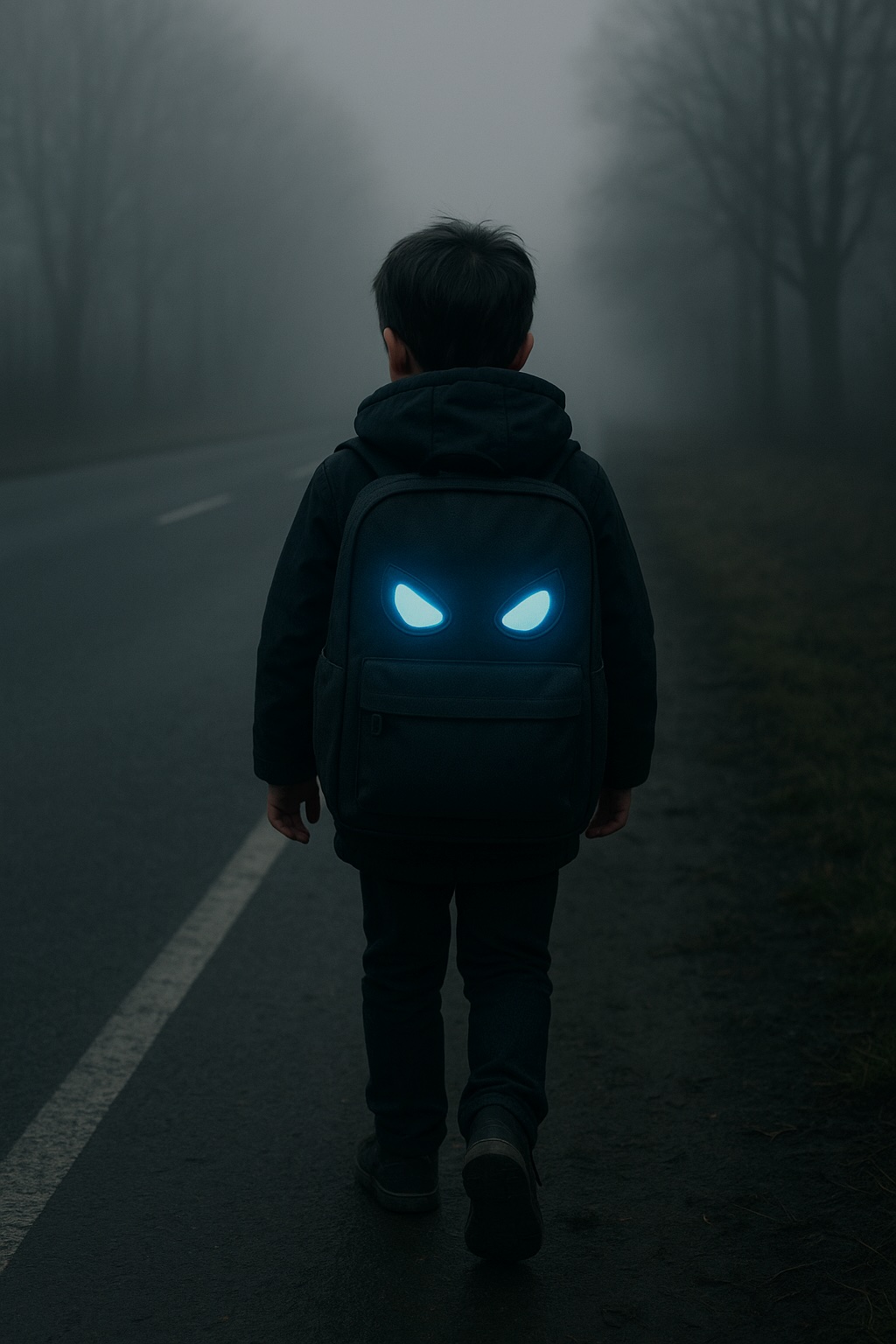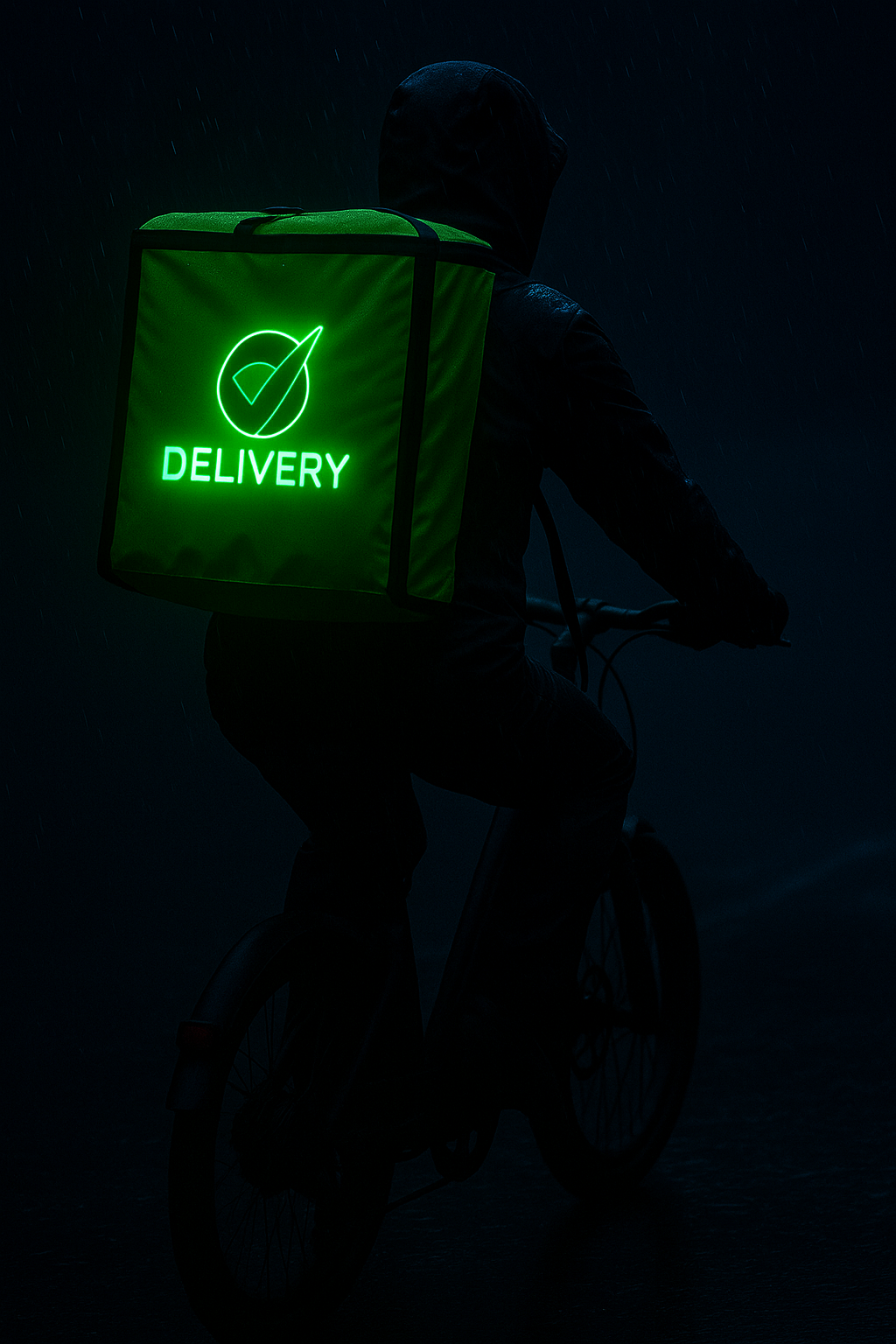When we think of high visibility clothing, we usually picture construction workers or road crews in neon vests. But visibility is just as critical for children on their way to school, night runners, cyclists, delivery riders, and commuters on e-scooters.
The European Road Safety Observatory reports that pedestrian fatalities nearly double during the darker winter months, with morning and evening peaks coinciding with school and work commutes (European Commission).
Globally, the World Health Organization estimates that over 270,000 pedestrians die each year in traffic crashes, with children and older people disproportionately affected (WHO Road Safety Facts).
Cyclists face similar dangers. In the US, cyclist fatalities increased by 44% between 2010 and 2020 according to the National Highway Traffic Safety Administration (NHTSA). Runners, meanwhile, are among the most vulnerable groups, often training in twilight hours with limited visibility.
According to WHO, road traffic injuries are the leading cause of death for children and young people aged 5–29, and more than 270,000 pedestrians are killed every year worldwide (WHO). In Europe, the European Road Safety Observatory notes that pedestrian fatalities nearly double in winter months compared to spring, with sharp morning and evening peaks during school and work commutes (European Commission).
In the US, the NHTSA reports that bicyclist fatalities have increased by 38% from 2011 to 2020, much of it in twilight or nighttime conditions (NHTSA). These numbers confirm the global trend: low-light visibility remains one of the greatest risk factors for vulnerable road users.
Reflective gear helps, but its performance depends on external light sources. Studies at Iowa State University’s InTrans confirmed that self-illuminating safety vests outperform reflective tape at wider angles (10–30° off-axis), meaning they’re visible even when headlights don’t hit directly (InTrans Study).
The conclusion is clear: passive visibility isn’t enough. Active lighting is the next frontier in safety wearables.
High visibility wearables are garments and accessories designed to increase personal visibility in low-light or high-risk conditions. Traditional versions rely on fluorescent fabrics and reflective strips. Modern innovations, however, incorporate active lighting through LEDs or OLEDs, which emit light directly.
Examples include:
By actively emitting light, these wearables ensure visibility from all directions and in complete darkness—a major leap from conventional reflective gear.

1. OLED Light Panels
2. Smart Fabrics with Sensors
3. Rechargeable and Sustainable Power
4. Fashion Meets Safety
Children are especially at risk because their small size makes them harder to spot in traffic. OECD research emphasizes that child pedestrians are disproportionately represented in urban accident statistics, particularly during the school commute (ITF Report).
According to the OECD International Transport Forum, child pedestrians represent a significant portion of road fatalities, especially during winter commutes when daylight is scarce (ITF Report).
This is where OLED wearables provide a transformative solution. Imagine a school backpack that automatically glows at dusk—increasing visibility on the walk home without the child needing to think about it. Or a jacket that illuminates playful icons when touched, turning safety into an engaging experience rather than an obligation. These small design shifts carry big psychological weight: children feel empowered, and parents gain peace of mind knowing visibility doesn’t depend on a driver’s headlights alone.

How OLEDs improve safety for kids:
Beyond physical safety, illuminated clothing also provides emotional reassurance to parents, knowing their child is visible to drivers from all angles—not just when a headlight reflects off a strip.
Athletes present another group that benefits from OLED safety gear. While reflective vests are inexpensive, they are often rejected by runners and cyclists who see them as bulky, unattractive, or uncomfortable. Many prefer stylish, breathable gear that fits seamlessly into their training routine.
OLED technology can bridge this gap. Integrated into lightweight jackets or armbands, OLED panels provide 360° active visibility without compromising design or comfort. They also open the door to smart integrations: for example, a runner’s OLED vest could sync with a smartwatch, flashing in sync with heart-rate zones or signaling turn-by-turn navigation from a fitness app. Cyclists could wear jackets that not only illuminate but also indicate turning signals, improving communication with drivers and reducing crash risks.
By combining performance, safety, and style, OLED wearables align perfectly with the lifestyle expectations of today’s athletes.
Challenges with current solutions:
OLED solutions offer clear benefits:
Athletes also care about aesthetics. OLED wearables offer performance + style, blending seamlessly into sportswear without looking like “safety gear.”
The growth of urban micro-mobility—bikes, e-scooters, and delivery services—means millions of people are now exposed to road traffic risks at night.
In European cities, e-scooter usage has skyrocketed, with accidents increasing accordingly. A BMJ Injury Prevention study found e-scooter riders face injury rates of 115 per million trips, many of which occur at night (BMJ).
Use cases for OLED commuters’ gear:
These products combine safety, branding, and fashion—appealing not just to individuals but to companies investing in workforce protection.

We are entering an era where safety clothing will become smarter, greener, and more connected. Today, most professional safety clothing is regulated under EN ISO 20471, which sets standards for fluorescent materials and retroreflective strips (ISO). While OLEDs and other active-lighting technologies are not yet mandated, European regulators increasingly view them as complementary tools that can significantly enhance compliance with visibility requirements (OSHwiki).
At the same time, sustainability is becoming a central concern. Traditional LEDs require rare earth materials and bulky circuits, while Inuru’s printed OLEDs use far fewer raw materials and can be integrated in recyclable substrates. According to Inuru, printed OLED systems can reduce energy use by up to 67% and material use by up to 95% in reuse cycles (Inuru Sustainability). This aligns with EU circular economy policies and positions OLED wearables as not just safer but also greener alternatives.
The convergence of OLED + IoT + sustainability positions wearables not just as protection, but as part of the connected city ecosystem.
High visibility wearables are no longer just neon vests with reflective strips. They are becoming smart, stylish, and actively illuminated, protecting not only workers but also children, athletes, and commuters.
OLED technology is at the heart of this transformation—providing lightweight comfort, customizable design, and reliable visibility in any environment.
Contact Inuru to explore how OLED safety solutions can protect lives and elevate your products—whether it’s children’s school gear, athletic apparel, or commuter wear.
Q1: Why is high visibility clothing important?
High visibility clothing is important because it makes people more noticeable in low-light or high-risk environments. By using fluorescent colors, reflective strips, or active lighting like OLEDs, it reduces accident risks for workers, runners, cyclists, and children by ensuring they are visible to drivers from greater distances.
Q2: How do OLEDs improve safety wearables?
OLEDs improve safety wearables by providing thin, flexible light panels that actively emit light. Unlike reflective tape, OLEDs are visible from wide angles without external headlights. They increase comfort, enable stylish designs, and ensure continuous visibility for workers, athletes, and children in low-light conditions.
Q3: What are examples of high visibility wearables?
High visibility wearables include safety vests and jackets, illuminated running and cycling gear, school backpacks for children, and smart coats for commuters. These garments and accessories use reflective strips, LEDs, or OLED panels to make the wearer more visible, improving road and workplace safety.
SOURCES:
(1)https://www.who.int/news-room/fact-sheets/detail/road-traffic-injuries
(3)https://oshwiki.osha.europa.eu/en/themes/protective-clothing-reflective-clothing
(4)https://www.iso.org/standard/42816.html
(5)https://pmc.ncbi.nlm.nih.gov/articles/PMC8985928/
(6)https://www.intrans.iastate.edu/research/completed/self-illuminating-safety-vest/
(9)https://www.who.int/news-room/fact-sheets/detail/road-traffic-injuries
(10)https://www.inuru.com/about/contact
(11)https://www.inuru.com/news/inuru-launches-oled-mass-production-near-berlin
(12) https://www.inuru.com/sustainability